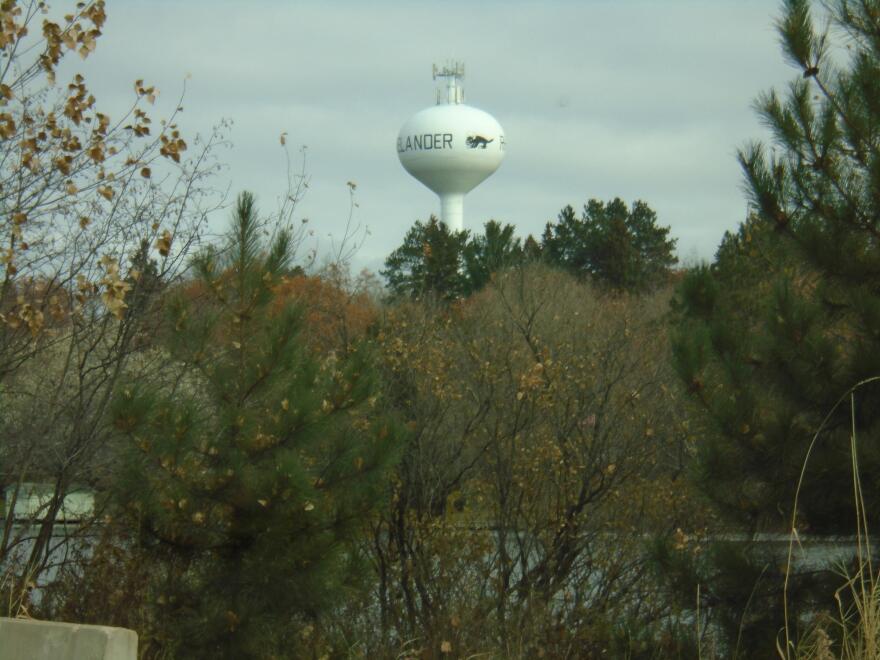Note: this story has been updated to include comments from the DNR's Kyle Burton in a Tuesday interview. Rhinelander City Administrator Daniel Guild has been invited to comment.
In a letter to Rhinelander City Administrator Daniel Guild on Tuesday, the Wisconsin DNR said it had “no reason to question the accuracy” of tests showing high levels of per- and polyfluoroalkyl substances (PFAS) in a city water well.
The letter came in response to Guild’s suggestion, in a Nov. 5 message to residents, that high PFAS levels in a May sample at Well 7 could have come from sample contamination.
“The department has no reason to question the accuracy of these previous PFAS sampling results, the laboratory or the test methods upon which they were based,” wrote Steven Elmore, the program director of the DNR’s Bureau of Drinking Water and Groundwater, in his letter to Guild.
RT Krueger, the president of Northern Lake Service in Crandon, which conducts Rhinelander’s water testing, has steadfastly defended the testing accuracy from the beginning.
“We know that that lab is credible,” said DNR Drinking Water and Groundwater Program Field Operations Director Kyle Burton in an interview on Wednesday. “Because of the lab method that’s being used and the credibility of the lab that’s doing the analysis, we would not wonder about the analysis part or the lab-work part of the sampling.”

Additionally, Elmore pushed the city to make all PFAS testing results easily accessible to residents. Recent PFAS testing results were only made available after a WXPR open records request. See the links below those results.
“The department recommends that Rhinelander accomplish this effort by posting all PFAS results on the city website as soon as reasonably practicable,” wrote Elmore.
“We want to make sure that all of us are providing clear and the most accurate information to the public,” Burton said. “The easy way to do that is just to put the sample results out there.”
Elmore stopped short of recommending the city shut off a different well, Well 8, although he wrote “continued monitoring is advised.” Test results show rising levels of PFHxS, a compound in the PFAS

family, in the well. While there are no state or federal recommendations on maximum PFHxS levels, a similarly high level of PFHxS in the Crescent Spring near Rhinelander caused the Town of Crescent and Oneida County Health Department to caution people not to drink from it. The health department cited maximum levels for PFHxS in other states, like New Hampshire, in making the recommendation.
In his letter, Elmore classified PFHxS and other PFAS-family chemicals as “potential health risk[s].” In a Nov. 7 interview, Guild said PFHxS levels didn’t cause him to shut off Well 8 because “there are no human studies. There are no human trials. There are no animal studies. There are no animal trials on any of these other hundreds and hundreds and hundreds of compounds.” In fact, New Hampshire cites several studies on PFHxS in its regulatory literature.
Generally, PFAS are a family of more than 4,000 manmade compounds formerly used in manufacturing and consumer products. The best-known are PFOS and PFOA, which have been tied to health risks like thyroid disease, low birthweights and cancer.

In June, Rhinelander shut down Well 7 after a test found elevated levels of PFOS and PFOA. It began drawing drinking water only from four other active wells in the city.
Test results obtained via open records request showed decreasing levels of PFOS and PFOA. In October, tests showed no detection of either compound in Well 7.
But the DNR doesn’t believe the latest results are reflective of chemical concentrations in the groundwater near Well 7, which is located at the Rhinelander-Oneida County Airport.
“The lack of pumping the well may have resulted in not drawing contaminated groundwater into the well’s zone of influence. It is likely that under normal use (if it were put back in service), the concentrations of PFAS in well #7 would again increase,” Elmore wrote.

Guild has said Well 7 won’t be returned to service without notifying city residents. Elmore requested it not be activated without first consulting the DNR, as well.
Test records showing the rising levels of PFHxS in Well 8, which is located at 3400 Fox Ranch Road, are available here. Results showing falling values for PFOA, PFOS, and PFHxS in Well 7, at 3401 Fox Ranch Road, are here. Relevant parts of the documents are highlighted in red type.
_








